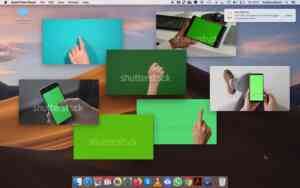Laughter through Disaster, or How the Joke Speaks Back Strangely

There seems little to laugh about in Europe these days: a war on its doorstep; towering inflation; the aftershocks of a seemingly never-ending pandemic; ongoing far-right populism and the ever-growing pool of conspiracy quacks; and so on. Perhaps it is because the past two years venue closures and restrictions on travel have shrunk the otherwise wide scope of art I usually encounter, or maybe the experience of pandemic-time and pandemic-space have tampered with my ability to see art genuinely again if not mediated through the limitations of my laptop. But little has beguiled me, dare I say amused me. Not that art should always amuse us, but there is something powerful and life-affirming about “laughing in an emergency.”1 Moreover it seems —and this is a blatant generalisation — where crisis bites hardest, humour is sharpest. Humour profoundly unsettles the order of things and has the capacity to be funny whilst simultaneously making us feel uncomfortable. In a way this is what I hope art does too: pull the numbing blanket of blinding comfort away from us, so that we can start seeing anew, however short that moment is.
A great, and by now iconic, example of laughter in the most dire of catastrophes – war – is the well-known Syrian collective Masasit Mati, a group of anonymous artists and actors, who from the start of the war in Syria in 2011 released a puppet theatre series on Youtube titled Top Goon: Diaries of a Little Dictator. Here Syrian President Bashar al-Assad is turned into a finger puppet and becomes Beeshu, the little dictator, who is surrounded by a whole entourage of political and other consorts, equally ridiculous and worked-up finger puppets. The dark humour is piercing and seeing al-Assad as a whiny, miniaturised caricature must have been cathartic for many Syrians caught up in the violent ugliness of war. Because this series was disseminated on Youtube, spoken in Arabic but with English subtitles, it reached diverse audiences of thousands. It was a textbook example of how the strategic use of a digital platform worked different audiences and different objectives. For the Syrian home front, it provided Syrians with critical commentary and a sense of playful relief and resilience, while internationally the Syrian plight was placed under the spotlight and showed a different face of Syrian resistance.
Chrisoula Lionis writes about the role humour plays in the representation of trauma and the experience of crisis, “but also the agency it lends to artists living and working in sites of political, economic and social ‘real emergencies.’”2 She makes an important distinction between how humour works in popular culture and contemporary art: “Where marginalised groups are expected to engage humour to ‘perform’ their identity in popular culture (Jewish, black, female stand-up comedians for example), the opposite might be said to be true in the contemporary artworld, which is often characterised by performances of sincerity and where authenticity and truth are seen as central to the intercultural encounter.”3 This explains why nowadays, with identity politics a hot potato in every field of knowledge and creative production, there is so little whimsy in contemporary art. And yet, I am encouraged, if not amused, by a generation of women artists of colour whose tongue-in-cheek practices defy this trend. With a range of maverick tactics and antics they address the complexity of what it means to live in these very confusing times in which emergencies — political, climate, economic, and personal — lurk around every corner. By using humour in their art, they articulate what Lionis describes as “a political aesthetic” and as “cultural resilience.”4 By drawing on the mundane aspects of digital life, like how we use our phones and other mobile devices, or how we communicate through video calls, especially since the pandemic, they amplify and make strange (post)pandemic life and allow for it to accrue comical and political mileage.
Iranian-German artist Anahita Razmi works across different media, and it is fair to say, across different identities too. Much of her work is about negotiating a hybrid world — technologically, culturally, politically. Her video piece scroll stock, pluck stock, click stock, drum stock, tap stock, rattle stock
(2020) produced in the midst of the pandemic when most of us were confined in lockdown and indeed doing lots of scrolling, swiping, tapping, and clicking on our phones and iPads, definitely puts a smile on my face.




We see a computer screen showing the generic sand dune screensaver of macOS Mojave, then QuickTime clips are clicked open one by one, unashamedly plucked from Shutterstock. They show us corporate clips of tech companies demonstrating how to navigate their respective interfaces: swipe, scroll, tap, click, etcetera. The actual content on these devices has been replaced by a green screen, so the emphasis is on the hand gesture to which Razmi has coupled an “oriental” sound like the drum of a darbuka or string of an oud. The result is wonderfully estranging. Here is an orchestra of common hand movements that daily give us access to our tech appliances. These gestures have become an embodied part of our haptic memory and we regard them as “neutral” and execute them without much thought. Razmi troubles this by orientalising these gestures and giving them sonic presence. Other little jokes are inserted too, like for example the laptop battery running out and a notification flashing across the screen. The technological quotidian is politicised and made unfamiliar. This is somewhat of a retro tactic reminiscent of the quirky spirit of early net.art when windows would crash your computer interface as a disturbing artistic gesture, but it is equally a tested and tried feminist strategy to unveil power structures.
Another estranging and rather discombobulating work that came out of the claustrophobia of pandemic lockdown is Berlin-based Kuwaiti artist Monira Al Qadiri and Lebanese artist and musician Raed Yassin’s collaboration Suspended Delirium (2021). Partners in life, this is their first artistic project together. Much of Al Qadiri’s oeuvre critically rethinks petro-culture and how the discovery of oil in Kuwait produced massive societal and cultural changes. To explore these divides, she constructs bridges across time and culture, often by means of technology. This has led to a unique aesthetics and form that conveys historical and ontological entanglements but is often also characterised by a certain lightness. In the installation Suspended Delirium we see three talking robotic heads suspended from the ceiling. They eerily — and almost too perfectly —represent Al Qadiri, Yassin, and their cat Lumi. The trio makes up the close-knit family pandemic bubble. Accompanied by a musical soundtrack they have a conversation about exile, migration, and belonging. The combination of actual talking heads, an anthropomorphised pet cat, and a discussion on the deeply serious subject matters of multiple crises is profoundly defamiliarizing and surreal. I would say that it is uncomfortably comical too. It hooks us in the familiar lockdown reality that many of us experienced: the conversational loops held with our household bubbles, the mediation of talking heads on zoom — here visually brought to the fore, and perhaps foremost the unreal and crazy sensibility of it all. Here the machinations of life are smartly coded into machine motion; the suspension of time is manifest physically in the installation’s automated display; and the desire to be elsewhere and in some other time voiced robotically.
- Notes:
- 1 I borrow this phrase from scholar Chrisoula Lionis whose research focuses on humour and politics in contemporary art, in specific from her 2018-2020 research project Laughing in an Emergency: Humour, Cultural Resilience and Contemporary Art.
- 2 Chrisoula Lionis, “Humour and the Commodification of Suffering. Strategies of Cultural Resilience in Contemporary Art,” Third Text 35, no. 5 (2021).
- 3 Lionis.
- 4 Lionis.

